May 17, 2025 | 07:22 GMT +7
May 17, 2025 | 07:22 GMT +7
Hotline: 0913.378.918
May 17, 2025 | 07:22 GMT +7
Hotline: 0913.378.918

Cat Tien National Park is one of the six largest biosphere gardens in the world. Photo: Tran Trung.
Cat Tien National Park covers an area of more than 82,000 ha and is one of the six largest biosphere gardens in the world. This place is a favorable habitat for thousands of animals, including nearly 30 species listed in the Red Book and many large mammal populations such as gaur, elephant, and bear.
Biodiversity conservation in the national park is always associated with forest and wildlife protection, forest fire prevention and control, ensuring natural conditions to preserve the specific values of the ecosystem.
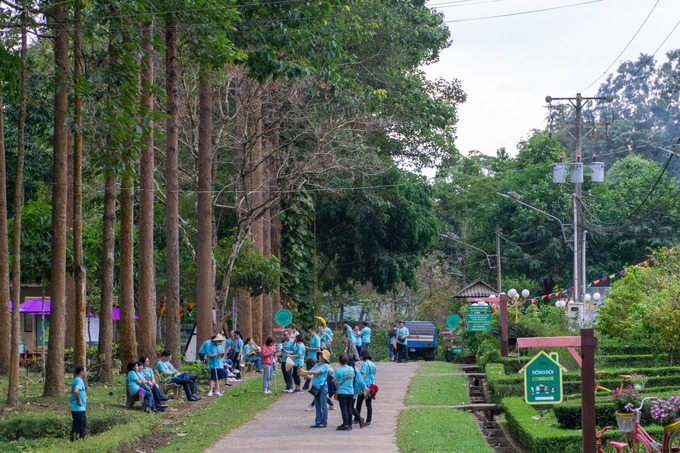
Tourists from all over the world come to experience Cat Tien National Park. Photo: Tran Trung.
“The wildlife in the National Park now is no longer what it used to be. Humans and animals no longer interact, so the animals are getting closer to each other. A few years ago, there was a time when people often came here to hunt. We put much effort to disseminate information and constantly remind people, then finally they understood," said Mr. Tran Van Binh, Director of the Center for Ecotourism and Environmental Education of Cat Tien National Park.
According to Mr. Binh, in order to promote local tourism development and raise awareness of forest protection and love for nature, Cat Tien National Forest has diversified forest tour packages, such as short distance tours or tours to visit Bau Sau Wetlands and rare animal rescue stations. Among them, the night tour seems to be the most unique. “Coming to Cat Tien National Park without staying overnight to enjoy the fresh air would be such a waste. When you stay overnight but pass up the opportunity to see wildlife, it would be even much more of a waste.”
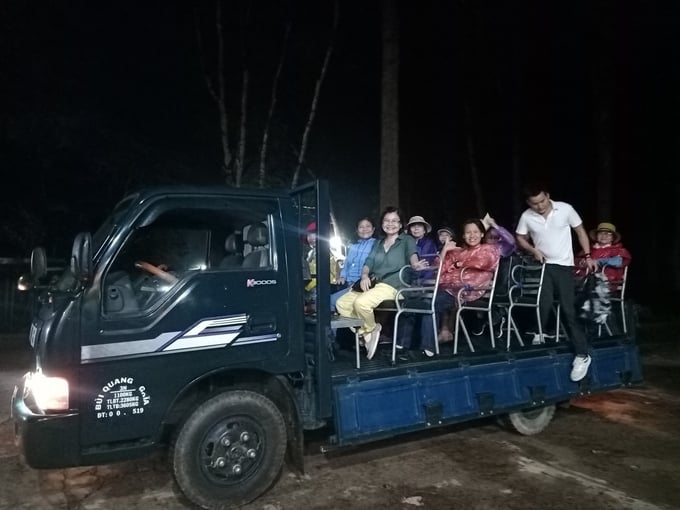
Tourists in specialized convertible car, ready to go see the animals at night. Photo: Tran Trung.
To experience what it feels like to witness the survival instincts of herbivores and the hunting instincts of wild animals, we were guided by the Park Management Board to see animals at night. We rode on a specialized convertible car with more than 20 seats, the body was solidified with steel poles. A large-capacity headlight is equipped in front of the car for vision.
When the car left the administrative center of the garden a few hundred meters, we heard the roosters crowing. Going deeper on the dim-lighted road, under the headlights we sometimes see wild boars foraging at night, ferrets roaming the tree branches to find ripe fruit or hedgehogs, pangolins crawling slowly on the road.

Wild boars looking for food in the night. Photo: Tran Trung.
According to a conservation officer of Cat Tien National Park, the best time to visit the park is in the dry season from November to May. Visiting time is usually from 19h to 21h on nights without rain and a moonless sky. When the rainy season comes, visitors will find it harder to see wild animals, or on moonlit days, animals will also eat less, not to mention the humid weather causes some typical insects of the forest like mosquitoes and leeches to regenerate and harm visitors.
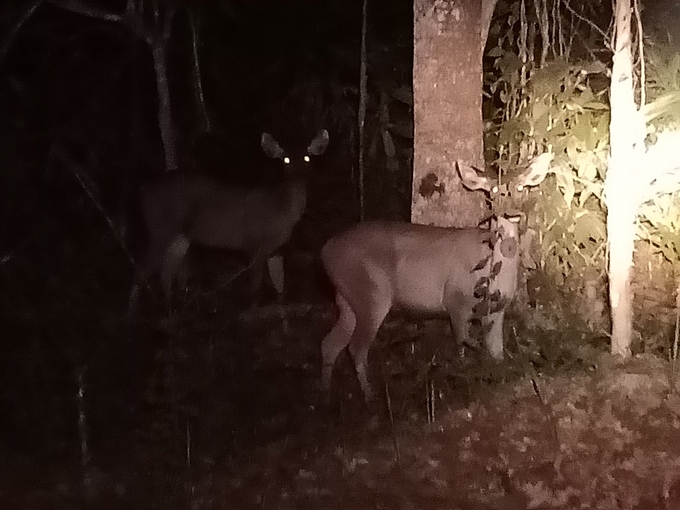
Wild deer nonchalantly eating grass under the night sky. Photo: Tran Trung.
Having this one time to see animals at night, hearing the sounds of insects along with the roars and howls of animals, the feeling of both thrill and excitement made it an unforgettable experience. Mr. Tran Van Binh said, “The unit is currently in charge of 21 tourist routes and attractions, including many exceptional tours which always attract tourists from inside and outside the country. In the past, many ring roads in the national park were mainly dirt roads. When the forest protectors were on patrol, they saw a concentration of many species of animals, so we renovated the area and upgraded to concrete roads to develop ecotourism”.

Apart from going to see animals at night, the Center for Rescue, Conservation and Development of Creatures is also a familiar destination for tourists to watch wildlife. Photo: Tran Trung.
Cat Tien National Park is currently coordinating with the Wildlife Research Institute and other international cooperation organizations such as WWF to install thermal sensor cameras to observe the behavior of animals for better monitoring and management. It can be said that Cat Tien National Park is one of the few places in Vietnam where tourists can see the natural life of wildlife. The experience of watching animals looking for food at night is an activity that gives tourists a very interesting experience, helping them raise their awareness of forest protection as well as their love of nature and wildlife.
Translated by Samuel Pham

(VAN) Cold-barn systems efficiently manage environmental and temperature conditions, which aids in the prevention of respiratory diseases in pigs and protects them from the vectors that transmit African swine fevers.
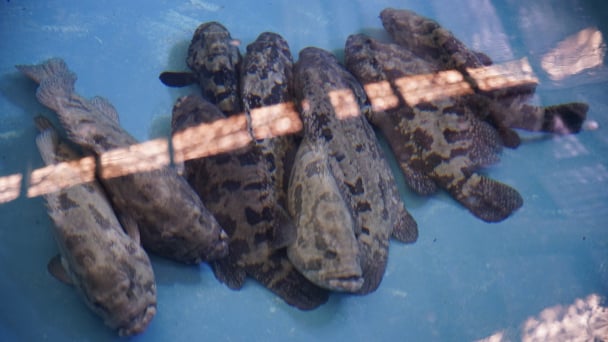
(VAN) To tackle challenges, the project 'Addressing key technical bottlenecks in the grouper supply chain in Vietnam' has been underway since 2024.
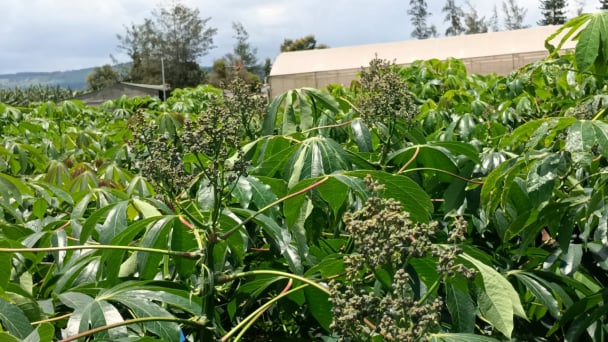
(VAN) The project 'Disease-Resilient and Sustainable Cassava Production Systems in the Mekong Region', funded by the Australian Center for International Agricultural Research (ACIAR), is being implemented from 2024 to 2028.
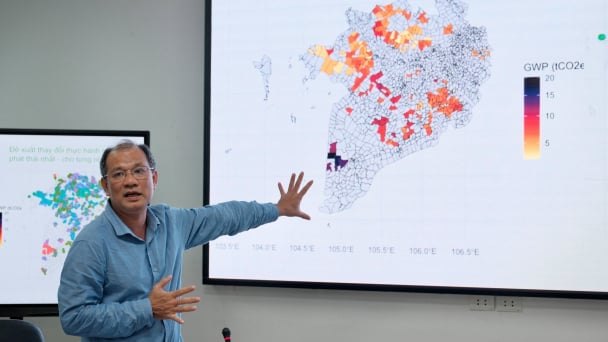
(VAN) Data from 10,000 farming households will help professionalize production organization and support the implementation of the One Million Hectares Program for High-Quality, Low-Emission Rice Cultivation.

(VAN) FAO Director-General QU Dongyu marks International Day of Plant Health at NENA conference.
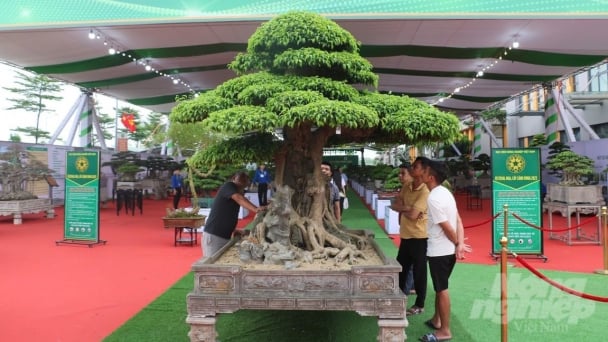
(VAN) Deputy Minister of Agriculture and Environment Hoang Trung affirmed that floriculture and ornamental plants are a growing industry that receives significant global attention.

(VAN) The three staple crops dominating modern diets – corn, rice and wheat – are familiar to Americans. However, fourth place is held by a dark horse: cassava.